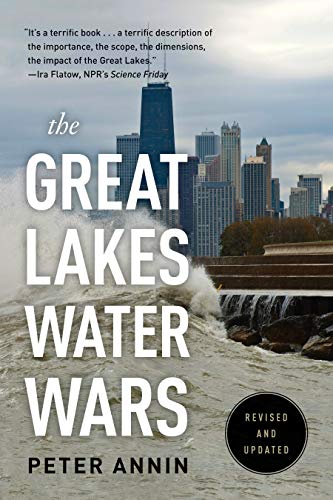
November 15, 2011DRBC Revises Proposed Water Withdrawal Regs for Gas DrillingThe Delaware River Basin Commission (DRBC) published a revised draft of its proposed regulations applicable to water withdrawals for gas drilling in the Delaware River Basin on November 8, 2011. The revised regulations reflect comments received on the initial draft of the proposed rules published on December 9, 2010. The public comment period on the proposed rules closed April 15, 2011. A record number of comments were submitted on the initial draft—69,800 comments—breaking all records for public involvement. The Commission is not holding a public hearing or accepting comments on the revised proposed regulations. While it considers the new rules, the DRBC has a moratorium on issuing approvals for water withdrawals for gas wells. The DRBC has scheduled a vote on the revised draft regulations on November 21, 2011 at a special meeting in Trenton, NJ. A vote to approve gas regulations would lift the current moratorium. If rules permitting gas drilling in the Basin are adopted, it is estimated that 15,000 to 18,000 gas wells could cover the four-state, 13,500 square mile Basin over the next 30 years. The Basin covers 2,300 square miles of New York, including portions of Broome, Chenango, Delaware, Schoharie, Greene, Ulster, Orange and Sullivan Counties. Water from the Delaware River Basin supplies New York City and Philadelphia—a total of over 15 million people—with their drinking water. As noted in previous posts, the federal agencies overseeing the DRBC and the DRBC have been sued by New York Attorney General Eric Schneiderman and a group of environmental organizations for their failure to conduct a full environmental review of the proposed regulations under the National Environmental Policy Act (NEPA). On November 8, 2011, the AG issued the following statement in response to revised draft regulations:
Summary of the Revised Draft RegulationsThe revised draft regulations provide that the use of any water source within the Basin for natural gas development activities must have Commission approval. The revised regulations require that project sponsors of all natural gas development projects located in the basin must obtain a Bulk Water Use and Management Approval (BWA) for each natural gas well pad and each project consisting of the hydrostatic testing of natural gas gathering lines or transmission lines. A BWA must be in place before water from any source–whether inside or outside the Basin–is used for natural gas development activities in the Basin and before the project sponsor commences well pad construction (including initiation of site disturbance), or begins operation of a pre-existing natural gas well pad or natural gas well. “Natural gas development projects” is defined to include the construction and operation of all natural gas wells in the basin, regardless of the target geologic formation, whether a well is for production or exploration, and whether high-volume or low-volume hydraulic fracturing is contemplated. The revised regulations require pre- and annual post-construction groundwater sampling reports as a condition of the BWA for all natural gas well pad projects. The revised draft regulations are summarized in a fact sheet prepared by the DRBC. The revised draft regulations require that: (a) flowback and production water must be stored in closed tanks and either reused or removed from a pad site within a prescribed time (usually 90 days); (b) open impoundments at pad sites may be used only to store fresh water; and (c) no wastewater (treated or untreated), hydraulic fracturing fluid, mine drainage water, other fluids or unused water from any source may be placed into any fresh water impoundment or discharged to groundwater, surface water, roads or other land surfaces or otherwise used at a natural gas project site or elsewhere within the basin without express written approval. The revised draft regulations require that any wastewater treatment facility within the basin may accept nondomestic wastewater from a natural gas development project only if the facility first obtains approval from the Commission. The revised draft regulations contain three separate financial assurance requirements and three separate limits, each addressing a different concern–capping and closure ($25,000 per well or $250,000 in the aggregate); accidental spills and releases ($5 million for individual well pads not within a Natural Gas Development Plan (NGDP), and $8,000 per acre with a maximum of $25 million for lands within a NGDP; or if insurance is used, $5 million per occurrence and $25 million in the aggregate); and mitigation/restoration required as part of a NGDP (in an amount equal to the estimated cost of completing the mitigation and restoration, which will be specific to the NGDP). The DRBC substantially increased its financial requirements in case a drilling company goes bankrupt, yet leaves behind an abandoned well, or a well that needs environmental clean-up. The new financial assurance is $5 million dollars a well for spills or accidents, or $25 million dollars total if more than five wells are developed. Sealing a well that has lived out its usefulness is at $25,000 for each well, which is capped at $250,000 dollars. In order to encourage the use of sources other than fresh water for hydraulic fracturing of natural gas wells, the revised draft regulations provide for ADAs for the diversion into the basin (importation) of non-contact cooling water, treated wastewater that meets certain criteria, mine drainage water, and recovered flowback and production water (if within the same state) to be used in hydraulic fracturing. The new rules would dramatically increase the amount of money that drillers would be required to post as "financial assurance" to cover the plugging and restoration of abandoned wells and the remediation of any pollution — from $125,000 per well in the 2010 draft to a minimum of $5 million per well and up to tens of millions under the latest proposal. Concerns with the Proposed DRBC RegulationsCritics of the proposed regulations believe the regulations are inadequate to protect water supplies from the risks posed by gas drilling. A press release issued November 10, 2011, by Berks Gas Truth, Catskill Citizens for Safe Energy, Catskill Mountainkeeper, Damascus Citizens for Sustainability, Delaware Riverkeeper Network, Environment New Jersey, Food and Water Watch, Hudson Riverkeeper, and the New Jersey Sierra Club identified the top ten mistakes in the revised draft regulations. Top Ten Mistakes 1. They reduce the setbacks of gas well pads from a stream, water body, or wetland from 500 ft to 300 ft (greater of 300 ft. from wellbore or 100 ft. from nearest disturbance) exposing streams, rivers, and public surface water supplies to greater pollution. 500 feet is not adequate and 300 feet is even less. Setbacks recommended by commenters to DRBC were in the thousands of feet, not hundreds and are to be measured from the end of the horizontal wellbore, not the vertical well bore or surface disturbance. 2. They backed down on the treatability study DRBC was requiring for wastewater discharges and allow the host state or federal treatability study to be used instead. The host states do not require special treatability studies for the discharge of gas drilling wastewater and no treatment facilities have been built that can treat all of the contaminants in the wastewater, including Pennsylvania where the drilling frenzy is producing millions of gallons daily. Federal government agencies are studying hydraulic fracturing, including the wastewater. Due to the complexity of the technical issues involved, the Environmental Protection Agency’s study will not be done for several years; no federal guidance exists for treatability and without Delaware River-specific analysis, the Special Protection Waters requirements for the Delaware River cannot be met. 3. They continue the promotion of large centralized open wastewater pits that would hold toxic flowback and gas drilling wastewater. While the DRBC on one hand recommends closed tanks for this highly contaminated wastewater, on the other hand they promote very large basins that will hold hazardous fluids over long periods of time, open to the environment. 4. They encourage use of potentially contaminated sources of “reused” water for fracking without the institution of water quality standards to detoxify the fluids -- allowing minimal review of the quality and the source (even allowing for importation of wastewater into the Basin) of everything from mine drainage, gas flowback wastewater, non-contact cooling water from power plants and elsewhere, to treated sewage or industrial effluent, to be re-injected to frack a well. 5. They continue to relegate the regulation of gas well drilling and/or fracking of gas wells to the host states, where there is minimal regulation that, in practice, assures the pollution and degradation of our aquifers. 6. They have not completed a cumulative impact analysis or a comprehensive environmental study so they continue to lack the data and analysis necessary to accurately assess the potential effects or the means to prevent pollution and environmental and community degradation. The paltry 18 month Assessment provision is meaningless as a means to address cumulative impacts. A staff “review” after 18 months (with no defined scope) would then trigger a six-month review by the Commissioners for “adjustments”. Bottom line, the rules they vote on 11/21, if approved, will be carved in stone for two years with no limits on pace and density of well development – in PA 2,843 wells were drilled in 2010; so far in 2011 2,375 wells have been drilled – if that pace keeps up for the last 2 months of 2011, 2,855 wells will have been drilled. So that means in two years 5,693 wells were drilled in PA and could also occur in our Basin since DRBC has put no limits on development. There is no way that cumulative impacts (or individual well impacts) can be undone after the well(s) is drilled. DRBC is opening the flood gates to unbridled development of gas wells and the cumulative impacts will accrue uncontrolled. 7. They continue to allow drillers of 5 well pads (i.e. at 10-12 wells per pad that is 50 to 60 gas wells) or owners of less than 3200 acres of leaseholdings (and there are loopholes to escape that aggregation) to proceed with their operations without the benefit of any sort of comprehensive review or planning and without public participation in the review and permitting of these wells. 8. A new provision would allow fracking companies to self-monitor surface water for contamination, opening up serious conflicts of interest. The original regulations proposed have no mention of self-monitoring, just an imposed fee for monitoring to be conducted by DRBC. Considering that drillers in Pennsylvania are violating environmental permits at the rate of 10.5 violations per day and PADEP just can’t keep up with it, water pollution is even less likely to be caught and stopped. 9. The rules continue to default to weak and loophole-ridden stormwater management largely based on host state regulations which contain major exemptions for oil and gas activities. Where gas drilling and its infrastructure is surging forests are being cut to shreds by gas wells and the required appurtenant development, farms are being ruined by the industry’s heavy footprint, and streams are being loaded up with pollutants and sediment, choking out life and degrading water quality. 10. They continue to ignore air pollution, which is a major source of water contamination through the deposition of hazardous pollutants on the land and water surface. The local and far-reaching impacts of the emissions from gas well development is grossly unregulated due to exemptions in the law and people’s health and safety is paying the price of the substantial increase in air pollution. Posted by Rachel Treichler at 11/15/11 10:00 PM
Copyright 2021, Rachel Treichler
|
|






